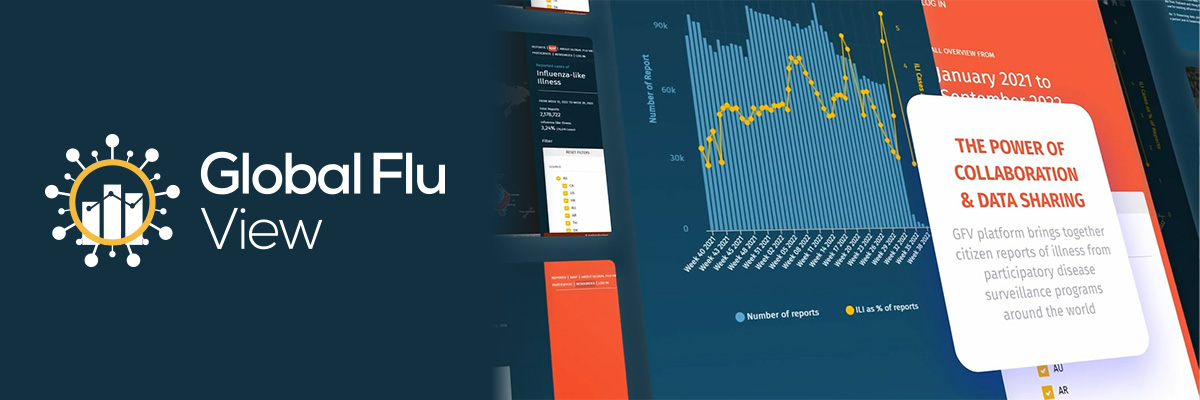
An innovative digital platform that visualizes data from local participants worldwide to report and track the spread of disease, named Global Flu View, has been awarded to the Mel and Enid Zuckerman College of Public Health at the University of Arizona, along with funding to hire a faculty member who will oversee and advance the project.
An innovative digital web platform that visualizes self-reported influenza-like illness (ILI) data from several participatory surveillance programs around the world, named Global Flu View (GFV), has been awarded to the Global Health Institute at the Mel and Enid Zuckerman College of Public Health at the University of Arizona, along with funding to hire a faculty member who will oversee and advance the project.
The ‘participatory surveillance’ approach engages local users to report and track the spread of disease, and at the same time provides useful information directly to the public. Community-reported symptoms capture information that may be missed by formal health systems reliant on people presenting to doctors or hospitals. The GFV digital platform brings together citizen reports of illness from participatory disease surveillance programs around the world.
With its broad reach and local participatory data gathering approach, the GFV platform has the potential to identify disease outbreaks early so that health officials can respond quickly and stop the spread. By bringing GFV into the College of Public Health at the University of Arizona, faculty and students will be able to learn about this powerful new public health tool and gather global data for response and research. The platform’s abilities and goals align with the existing programs and mission of the college’s Global Health Institute, and it will provide a unique opportunity to train a new generation in modern digital disease surveillance and community engagement on a global scale.
Developed by the non-profit Ending Pandemics, the creation of the GFV platform was guided by the leadership of Mark Smolinski, MD, MPH, and his team and funded by the Skoll Foundation. Dr. Smolinski, an alumnus and longtime supporter of the Zuckerman College of Public Health, founded Ending Pandemics, and he brings extensive experience tracking and targeting infectious disease with both governmental and non-governmental agencies.
To build its database, the GFV platform draws data from other existing participatory infectious disease surveillance programs, including Outbreaks Near Me which covers the United States and Canada, FluTracking which covers Australia and New Zealand, Influenzanet which covers many European countries, and SickSense in Thailand.
The goals of GFV include making self-reported ILI data visible to the public and accessible to researchers, public health officials, and healthcare providers in near real-time. The platform will also facilitate the sharing of methodological approaches, provide an application programming interface (API), and help expand the use of participatory surveillance for tracking flu and other diseases across the globe.
“We are thrilled to have the Global Flu View platform in the college,” says Iman Hakim, MD, MPH, Dean of the Zuckerman College of Public Health, “We are grateful to Ending Pandemics and the Skoll Foundation for the vision to see how GFV can enhance both global public health education and research, and how our faculty and students can guide, improve, and expand the platform in turn. I have to say a big ‘thank you’ to everyone involved.”
Core GFV Principles
The core principles of GFV include:
- Preserving data privacy by sharing de-identified data
- Maintaining data integrity
- Respect for the governance structure and compliance required by each data partner
- Fostering participatory surveillance as a tool for public health









